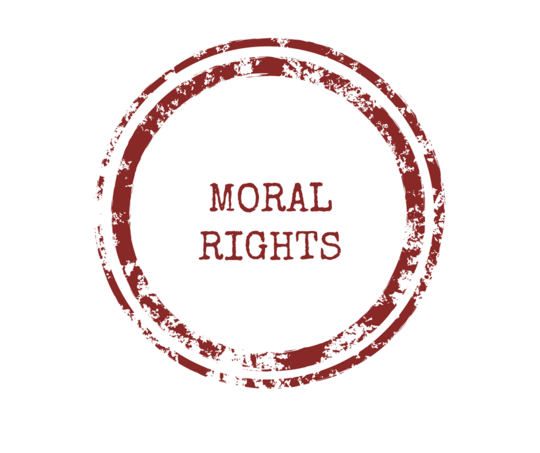
In many parts of the world, authors and artists also own “moral rights” in their works. Moral rights include the “right of attribution, the right to have a work published anonymously or pseudonymously, and the right to the integrity of the work.” The “right to integrity” means that right to object to the “distortion, or mutilation of the work” or use of the work that may impugn the author’s integrity and honor. Moral rights are retained by the author even after ownership rights to the work have changed. The concept of moral rights was developed in Europe and has been incorporated into many jurisdictions’ laws.
In the United States, until 1990, there was no federal law governing Moral Rights so certain states adopted their own versions of Moral Rights statutes. In 1990, when the U.S. became a member of the Berne Convention, the U.S. Congress passed a Moral Rights law but only limited it to works of visual art. This law is know as the Visual Artists Rights Act of 1990 and codified in 17 U.S.C. § 106A. Here’s an excerpt:
the author of a work of visual art-
(1) shall have the right-
(A) to claim authorship of that work, and
(B) to prevent the use of his or her name as the author of any work of visual art which he or she did not create;
(2) shall have the right to prevent the use of his or her name as the author of the work of visual art in the event of a distortion, mutilation, or other modification of the work which would be prejudicial to his or her honor or reputation; and
(3) subject to the limitations set forth in section 113(d), shall have the right-
(A) to prevent any intentional distortion, mutilation, or other modification of that work which would be prejudicial to his or her honor or reputation, and any intentional distortion, mutilation, or modification of that work is a violation of that right, and
(B) to prevent any destruction of a work of recognized stature, and any intentional or grossly negligent destruction of that work is a violation of that right.
These rights are not transferrable but may be waived in writing. The Act specifically states that rights are distinct from those of copyright but the term for such rights will expire, under specified circumstances, when rights in copyright expire.
So, how does the Visual Artists Rights Act (“VARA”) apply in real life? Here’s an example example of how VARA may be applied to a rather mundane dispute. Beginning in 2004, Christian Narkiewicz-Laine entered into a lease with Kevin Doyle for space in Galena, Illinois. Approximately six years later, Doyle cleared out the space and destroyed personal property and artwork belonging to Narkiewicz-Laine. Narkiewicz-Laine sued Doyle in federal court to recover damages for his lost property. In addition to state law claims, Narkiewicz-Laine also sought damages under VARA for destruction of artwork. The Act provides that the author of the work has the right to “to prevent any destruction of a work of recognized stature, and any intentional or grossly negligent destruction of that work is a violation of that right.” Note that the work must be one of “recognized stature.”
At trial, Narkiewicz-Laine presented the jury with an inventory of 1,457 pieces of artwork, items of personal property, and artwork created by others that were stored in the rental unit. He asked the jury to award him $11 million for the lost property. It turned out that Narkiewicz-Laine was overly optimistic. Although the jury returned a verdict in Narkiewicz-Laine’s favor, it found that Doyle had destroyed only four pieces of artwork protected under VARA and awarded him $120,000 in damages plus another $180,000 for his other losses, totaling $300,000. We don’t know why he was awarded damages for only four pieces. Perhaps, they were the only works belonging to him that were of a “recognized stature.” Not satisfied, Narkiewicz-Laine appealed to the U.S. Court of Appeals for the Seventh Circuit, which affirmed the lower court’s award.
Who would have thought you could recover for the destruction of artwork under federal law, even in a landlord dispute. Copyright and moral rights statutes are powerful tools in the legal arsenal.
— Adam G. Garson, Esq.

